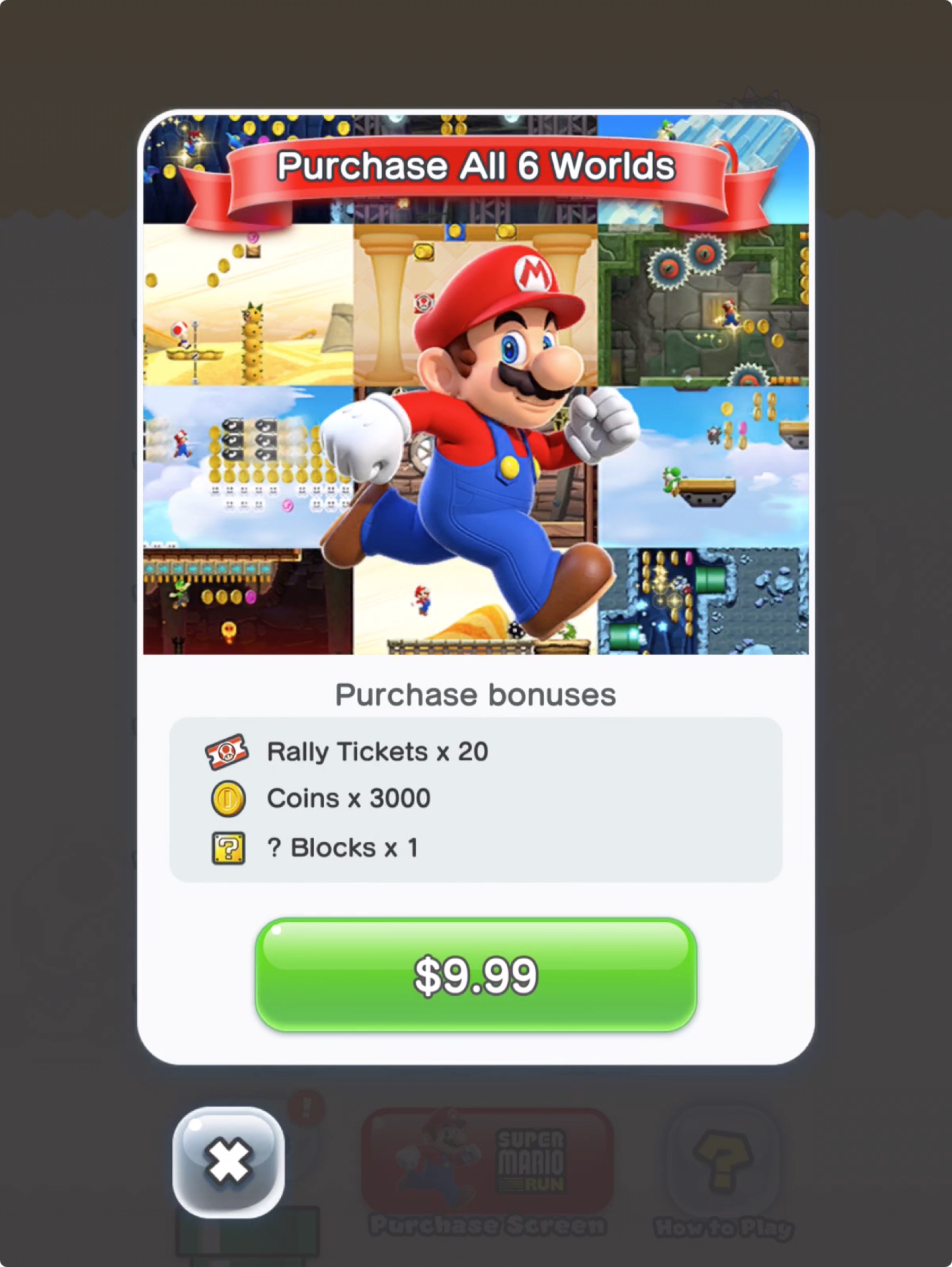Nintendo's Massive Own Goals with Super Mario Run
Super Mario Run is out and fans everywhere are revelling in a new Mario game that is really well put together.
However, there are a few things that Nintendo needs to learn from this launch - but they won't.
Let's face it, if you ignore all the people moaning about the fact that it's not free, the game itself is great - yet there are massive marketing and PR failures that Nintendo probably doesn't care about but its shareholders certainly do.
1. The Launch Date
Super Mario Run had a launch date of December 15 2016. That makes sense - everyone getting a new iPhone over the Christmas will ring in the new year playing Mario and everyone at Nintendo will have a very happy Crimbo.
The only problem with that is that the game didn't launch on December 15 - at least for half of the world - and Nintendo didn't tell anyone about it.
We had no launch time - just a date. By the time it actually released (sometime after 5pm GMT) everywhere east of Thailand (including Nintendo of Japan) had already reached December 16th.
If you're going to do a global launch, at least try and be aware of time zones.
2. The Price
Now I should point out straight that Super Mario Run is well priced. With 24 levels on launch, each requiring multiple playthroughs to complete all the challenges, as well as other games such as 'Toad Rally'; there is more than enough content to justify the £7.99/$9.99.
If 'New Super Mario Bros 2' is worth 3-4 times the price, then Super Mario Run only has to be 1/3 - 1/4 of the size to justify the price (at least from a game point of view). From an app point of view, yes it's expensive but one would easily burn through more than its value in micro-transaction purchases had it launched in that way.
The issue doesn't arise in the fact that it's a premium priced app - the issue is that not enough people knew what they were getting into ahead of launch.
Nintendo's marketing of Super Mario Run was awful - in fact there wasn't really any. Between the iPhone Keynote and the appearance on the Jimmy Fallon show, we didn't get too much information on the game. We didn't know how big the game was or what our £7.99 was going to get us. More of an issue was that not enough people knew it was going to be a paid app in the first place.
Obviously those that were willing to cough up the cash from the off were aware of how big the game was by the time the game was actually available to download but that leads us onto number three.
3. It's free to try
For a couple of reasons, this was a mistake. Firstly, Nintendo were not upfront enough about the price from the off. In all the marketing we saw (which let's face, there wasn't much) the price was never included. Those that were interested enough could have sought out that information but generally speaking people didn't - and it shows in the figures and the user ratings.
Despite briefly being the top grossing app in the US and generating more than $30 million in gross revenue (which translates to about 3 million players buying the full game), according to market research firm Newzoo, Super Mario Run had an estimated 90 million total downloads of the game. In other words the number of players coughing up the dough is a little over 3%.
This is a problem because the fact that decided to go for a premium 'one-off-fee' model means that they are automatically going to be making less revenue in the first place. The last thing they need is to have people being turned off before they even buy the game.
At £7.99/$9.99, those that are curious about a new Mario game will be more than happy to pay - so long as though know they are getting a good product. Super Mario Run is not as big as similar DS/3DS games but it's price is justified. So if one wanted to give it a try, eight quid isn't too much to cough up.
However, Nintendo decided to make the game to free to download and try, with the other 85% of the game being an in-app purchase. This essentially makes the first three and a bit levels a demo - which you are able to play multiple times to reach the goals (collecting different coloured special coins). Research overwhelmingly shows that games with demos sell fewer copies for exactly the reason that those wanting to "give it a try" don't need to pay anything.
The fact that Nintendo is so strict on its YouTube policy means that there are going to be fewer Let's Plays of Super Mario Run than other premium mobile games so they are primed to have curious people having a punt at a relatively small amount of money.
But seeing as they can try for free, there are a few different segments of customer that arise:
1. "I've tried it. I wasn't really a fan. I won't be buying."
2. "I've tried it. It was good, I liked it. But I'm not paying £7.99 for it."
3. "It's really good, but I'm quite happy just playing the few levels that are free."
4. "I have to pay £7.99 and I can't play it offline? No thanks." (We'll get back to this one).
5. "Love it. Well worth the money."
In other words, one creates more excuses for people not buy it.
4. You have to be online to play
Yes Nintendo, you don't like piracy, we get it. You've been hammering it home since the NES.
We also haven't failed to notice that:
- The NES lockout chip caused many third party developers to hate you
- It also made the NES more prone to read failures
- Your stubbornness to stick with cartridges because they were harder to pirate led to the N64 being a distant competitor to Sony's Playstation
- Developers left you because your cartridges could no longer handle their games
- Widespread piracy of Playstation games only help cement people's love for the console and the PS2 became the best selling console of all time
- You did a great job cramming Gamecube games onto those small discs (again, because they're harder to pirate) but the sheer fact that they looked that small was enough for many customers to assume you had the least powerful console
Stop with the piracy worries. Anyone who travels via public transport will think twice about purchasing Super Mario Run. Why? Because it won't work on the tube (or any underground subway/metro). It also won't work on planes. Or if you only have an iPod or iPad and are not in range of WiFi.
5. They're only hurting themselves (oh, and the consumers and the shareholders too)
Nintendo does what they want. That much is clear.
The fact that they've made so many mistakes with supplies of amiibo, Pokemon Go Plus and NES Classic Editions has only lined the pockets of scalpers on eBay rather than adding to the company's profits.
While they may be in a fairly good place financially (especially compared to Sony for example) there have been so many lost opportunities when it comes to making money and it shows when you take a look at their stock price.
If we ignore the boom and bust surrounding Pokemon Go (shares rocketed until people realised Nintendo didn't make the app) and focus purely on the launch of Super Mario Run - there was no spike whatsoever. The stock steadily fell throughout December.
Nintendo may have made $30million off an app that probably cost nowhere near that much to develop and market but that won't be too much consolation for the shareholders. Not to mention that Super Mario Run now has an average rating of 2.5 stars on the app store despite it being a great game - that's what happens when you make simple mistakes.












